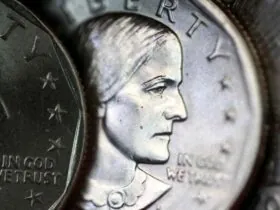The $5 bill, featuring the iconic portrait of Abraham Lincoln, is a staple of U.S. currency. However, the story of the $5 bill stretches far beyond its modern-day form, with various designs and types of $5 notes circulating over the centuries. From its early days as a “demand note” in 1861 to today’s well-known Federal Reserve note, the $5 bill has evolved, and some of its rarer variations can command thousands of dollars on the collectibles market. Below, we explore the different types of $5 bills and their value, focusing on some of the most sought-after examples.
1861 $5 Demand Notes: A Historic Beginning
This Article Includes
The 1861 $5 Demand Notes were the first widely circulated federal notes since the Continental Currency of the late 18th century. Issued during a critical period in U.S. history, these notes were printed by the American Bank Note Company using a patented steel plate process. The 1861 $5 Demand Note is notable for its design, featuring a statue representing freedom and a portrait of Alexander Hamilton, a founding figure in American finance.
Due to their historical significance and relatively low survival rate, these notes are highly sought after by collectors. In fact, one 1861 $5 Demand Note was sold for a remarkable $38,400, setting a high bar for the value of early U.S. currency.
1869 $5 Legal Tender Bill: The “Rainbow Note”
In 1869, the U.S. Treasury redesigned the $5 bill, resulting in the 1869 Legal Tender Note, commonly referred to as a “Rainbow Note” due to its vibrant, multi-colored design. The obverse featured a portrait of Andrew Jackson, while the reverse showcased a vignette depicting the Pioneer Family, symbolizing the American spirit of expansion.
Although the average value of an 1869 $5 Legal Tender Bill is around $400, uncirculated examples can fetch prices upwards of $1,400, making these notes valuable to collectors who appreciate their historical and artistic appeal.
1914 $5 Large-Size Federal Reserve Note: The “Horseblanket”
The 1914 $5 Large-Size Federal Reserve Note earned its nickname, the “horseblanket,” due to its large size compared to modern bills. These notes were a part of the early Federal Reserve system and featured an elaborate design with a portrait of Abraham Lincoln on the front. While the large size of these bills may seem unusual today, they represent an important era in U.S. currency.
The 1914 $5 bill is considered a hot collectible in today’s market. While bills in lower conditions are typically valued around $100, a note in very good condition can be sold for as much as $196, and higher-grade notes are even more valuable.
1934 $5 Silver Certificate and Federal Reserve Notes: A New Era
The 1934 $5 bill marked a significant shift in U.S. currency, as it was the first year that $5 Silver Certificates were printed in a smaller size, matching the dimensions of $1 and $10 bills. This year also saw the U.S. Treasury seal moved to the right side of the notes, a feature that distinguished these bills from earlier versions.
One of the key features of the 1934 series was the introduction of “star notes.” These replacement bills were issued to replace damaged or misprinted notes before they entered circulation. Among the various notes issued in 1934, the most valuable are those with unique seals or star notes. Some of the notable values for these notes include:
- 1934 A Hawaii $5 Bill (Brown Seal): Up to $6,000
- 1934 A North Africa $5 Bill (Yellow Seal): Up to $1,850
- 1934 A – D Blue Seal $5 Bill: Up to $425
These values reflect the rarity and demand for specific series, particularly those with unique seals or history tied to wartime use.
Factors Affecting the Value of $5 Bills
Like all collectible currency, the value of a $5 bill is primarily determined by two key factors: rarity and condition. Rarer notes, such as early issues or those with unique features, are generally more valuable. Furthermore, the condition of the bill plays a crucial role—ungraded bills or those in poor condition are often worth only face value, while high-grade bills can command much higher prices. Grading services such as PMG (Paper Money Guaranty) and CGA (Certified Guaranty Company) can provide an official assessment of a bill’s condition, which significantly influences its market value.
Conclusion
While most $5 bills are worth only their face value, certain historical notes can fetch substantial sums on the collectibles market. Bills like the 1861 $5 Demand Notes and the 1934 A Hawaii $5 Bill can command thousands of dollars, especially when they are rare or in excellent condition. Whether you are a seasoned collector or a newcomer, understanding the value of different types of $5 bills is key to identifying potential treasures within your collection.







Leave a Reply